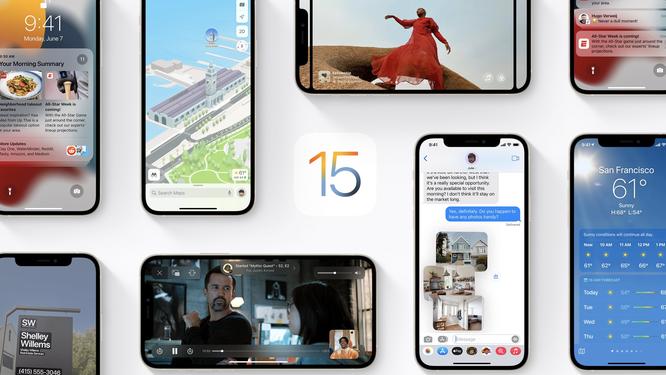Apple: iOS 15 now installed on more than 60% of all iPhones
Apple has updated its mobile installation numbers for the first time since iOS 15 was released in September, detailing just how many devices are running its latest mobile operating system.
Apple's iOS 15 is now installed on 72% of iPhones that are four years old or newer – and 62% of all iDevices regardless of age, according to data from the company's App Support webpage.
Apple splits its mobile OS installation data into two main categories: devices introduced in the last four years and all devices; it then tracks iOS and iPadOS installs in each of those categories. The data is based on devices that conducted transactions on the App Store on Jan. 11.
(Apple’s previous mobile OS, iOS 14, is now installed on just 26% of iDevices released over the past four years — and on just 2% of all earlier devices — highlighitng how quickly users move to the newest mobile OS after release.)
In terms of iPads, Apple’s data indicated 63% of devices introduced over the past four years now run iPadOS 15, 39% run iPadOS 14 and just 4% run all earlier platforms.
For all iPad devices, regardless of release time, 49% now run iPadOS 15, 7% run iPadOS14 and 14% run earlier versions of the operating system.
In June 2021, Apple appeared to signal it would not push iPhone and iPad users to move to iOS 15 and iPadOS 15once the two platforms launched. This month, however, the company seemed to be putting more pressure on users to upgrade, according to the website MacRumors. Apple also stopped releasing iOS 14 updates.

Android is the world’s most popular smartphone platform, and as of May 2021, some version of that mobile OS was running on 72.8% of all mobile devices, according to Statista. The latest version, Android 12, has not yet rolled out to most Android devices.
Comparing Android OS uptake to Apple iOS uptake is always a tricky endeavor, as Apple controls its entire ecosystem and can do what it deems appropriate for users. Google’s Android is a different animal, as it needs to work through the various mobile device makers and even some of the carriers who have customized versions of Android on their devices.
“Google is trying hard to make things more standardized and get rid of some of this complexity, but it can’t eliminate it altogether,” said Jack Gold, principal analyst at J. Gold Associates.
Simply put, Android isn’t as standardized as iOS, meaning there are many smaller updates to it and many more versions based on the myriad of mobile devices on which it runs. And that includes much older versions on mobile devices that can’t be upgraded to the latest Android version because of hardware limitations.
“I think what we’re starting to see is Google offering new versions of Android on Pixel first for a couple of reasons. One, it gives them a market advantage.But two, it lets them release to a smaller group of phones first to verify there are no major problems with the release,” Gold said.
Android 12 (known to internal developers as "Snow Cone"), became publicly available on Oct. 4; the first rollout began with Google Pixel 3 and higher devices on Oct. 18.
About half of all Android devices were running either Android 10 (26.5%) or Android 11 (24.3%) as of Nov. 22,according to Google’s Android Studios and a report on the website Android Police. Android 9 is on 18.2% of devices, and Android 8.0 and 8.1 are on 9.7% and 4.0% of devices, respectively. Android 7 and 7.1 ("Nougat") are on 6.3% of devices, while Android 6 ("Marshmallow") sits at 5.1%. There are about 3.9% of users still running Android 5 ("Lollipop") and 1.4% on Android 4.4 ("KitKat"). The oldest Android version in the list is Android 4.1 ("Jelly Bean") with 0.6% of all devices.
According to business analytics service Mixpanel's data, adoption of iOS 15 surpassed iOS 14 on Nov. 22. Today, Mixpanel’s data shows iOS 15 is being used on 64% of devices, while iOS 14 is running on about 31.5% of them.
It appears iOS 14, which was launched Sept. 7, 2020, had a much faster adoption rate over iOS 13, according to Mixpanel’s data. It took iOS 14 a little less than two months to surpass iOS 13 in adoption. By December, 2020, iOS 14 was on 80% of all iPhones.
To date, however, 2015's iOS 9 remains the leader for fastest uptake. Launched on Sept. 16, 2015, it needed just eight days to pass iOS 8, and in 10 days, it garnered 50% of the install base. (A month after its release, iOS 9 was on 62% of iDevices, compared to iOS 8, which plummeted to just 29.65%.)








